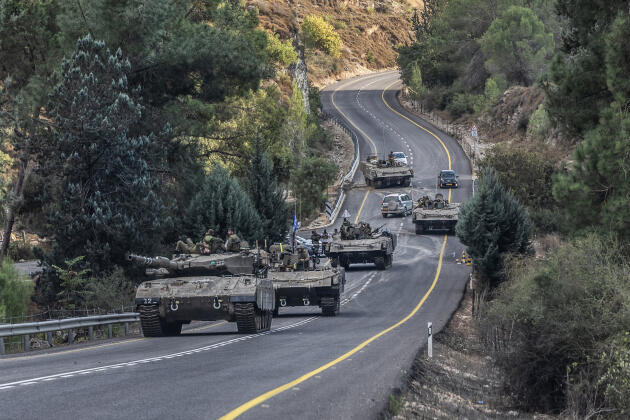The Sri Lanka Jihadist (ISIS?) Attacks: How Real the Change? – Updates
Following my article “First take on the terrorist attacks in Sri Lanka” of April 23, 2019, and the updated and expanded analysis on the events, “The Sri Lanka Jihadist (ISIS?) Attacks: How Real the Change?” (see at:
https://ict.org.il/Article/2383/The_Sri_Lanka_Jihadist__Attacks#gsc.tab=0, see below the latest updates on the events.
Although almost two weeks have passed since I wrote my analysis, no significant information has surfaced that changes my evaluation of the facts.
Although 8 foreign intelligence agencies are helping the Sri Lankan investigation of the attacks, no information about direct ISIS involvement in the terrorist campaign has been published.
Regarding the major question about the preparations of the explosive devices, according to the authorities there were two people among the local group of plotters who are experts in bombs and those two are dead. They had stored part of the explosives for future attacks and these have been confiscated. Authorities cite evidence that local planners followed terror group’s designs from the internet to build the bombs.
In my analysis I compared the Sri Lankan attacks to the one in Barcelona and Cambrils, Spain, in August 2017. The Catalonia terrorist cell was based on family (four pairs of brothers), personal and neighborhood relations.
The Sti Lankan cells were also based on certain members of individual families, radicalized and operating as units. According to security sources, each unit then liaised with other radicalized family groups, forming larger networks, which explains how information was “tightly protected within networks of loyalty that transcended ideology. Encrypted social media networks and messaging apps are believed to have facilitated communication and planning.” The investigators are now trying to find out how these people communicated and coordinated. The sources compared the Sri Lankan attacks with the Surabaya, Indonesia church attacks in May 2018 by a cell formed by one family of six, including a nine-year-old girl. (Anbarasan Ethirajan, BBC News, 11 May 2019, https://www.bbc.com/news/world-asia-48218907)
In the military raid of the security forces on the Zahran Hashim’s house in Sainthamaruthu town, south of Kattankudy, on 26 April, his parents, two brothers and their families have been killed. Amid the wreckage, police found white dresses usually worn by Buddhist women during prayers at temples. They suspect that the militants had planned to enter temples in disguise during the Buddhist festival of Vesak in mid-May to carry out further attacks.
So far more than 70 people believed to be linked to the radicals have been arrested. Almost all suspects and plotters involved in the attacks had either been arrested or were dead, acting police chief Chandana Wickramaratne said. Investigators are still tracking down 10 more key players associated with plotting the bombings, a military source told Reuters.
Police say assets worth about $40 million belonging to the bombers and plotters linked to the attacks have been frozen.
Home Affairs Minister Vajira Abeywardena said that among the 600 foreigners expelled from Sri Lanka 200 were clerics found to have overstayed visas. “Considering the current situation in the country, we reviewed the visa system and took a decision to tighten visa restrictions for religious teachers. There are religious institutions which have been getting in foreign preachers for decades,” Abeywardena said. “We have no issues with them, but there are some which mushroomed recently. We will pay more attention to them.”Abeywardena told the AFP. The minister did not give the nationalities of those who have been expelled, but police informed that foreigners who have overstayed their visas were from Bangladesh, India, the Maldives and Pakistan.
The air force warned that it will shoot down drones in the country’s airspace if necessary, saying they are a threat to national security. Authorities banned drones after last month’s attacks.
Sri Lankan authorities have called on the public to surrender swords and large knives amid heightened security concerns. Police said knives used for legal everyday activities should not be included in the handover this weekend. Hundreds of weapons have been seized in searches since the 21 April attacks.
It should be stressed that in spite of the intelligence blunder and the surprise and fatality of the attacks, the Sri Lankan police, security and military have been quite efficient in arresting most and neutralizing great part of the human infrastructure of the terrorist network.
Sri Lanka has imposed a state of emergency and given wide powers to troops and police to arrest and detain suspects for long periods. House-to-house searches are being carried out across the country looking for explosives and propaganda material of Islamic extremists.
The bombings shattered the relative peace that has existed in the nation since the civil war ended a decade ago. Violence erupted on May 8 in Porutota village near Negombo, after a largely Catholic mob attacked Muslim-owned shops and a vehicle — prompting church authorities to call for calm and no further hostilities against Muslims in the area. Police and army soldiers have been deployed to many churches and mosques around Sri Lanka, both over fears of further terrorist violence, and revenge attacks.
 This article is part of the RED-Alert project, funded by the European Union’s Horizon 2020 research and innovation Programme under grant agreement No 740688.
This article is part of the RED-Alert project, funded by the European Union’s Horizon 2020 research and innovation Programme under grant agreement No 740688.






